The 4 Most Important Elements of a Proactive Security Program
How to shift your mindset and build a proactive security program
There is perhaps no phrase more overused in corporate security than “our goal is to be proactive instead of just reactive.” Most security leaders know they need to transition their program away from pure crisis management, pivoting from incident to incident without any high-level strategy for the department. However, actually building a proactive security program is a nebulous concept. What does it really mean to implement a proactive security program?
Base Operations works with some of the most innovative corporate security teams in the world, which has illuminated the elements common across the most proactive security organizations
Prioritize what is important, not just urgent.
Myopically focusing on crisis management might mean patching the hull of a ship without realizing why it’s sinking. Security departments that pivot from incident to incident are performing their basic function but miss the opportunity to build an enduring security strategy that adds continuous value to the company.
To prioritize what is important, security leaders should conduct threat assessments to identify potential risks and vulnerabilities. This will help them focus on the most critical areas that require attention. Ways to prioritize the important, not just the urgent, include:
- Proactively assessing threats across a company’s footprint by setting a regular cadence of threat assessments.
- Building a unified framework for performing threat assessments so they can be accurately compared and contrasted.
- Establishing criteria for prioritization. When conducting proactive work, security professionals have infinite ways to spend their time. Clearly determining what rises to the level of a priority is important for efficient time use.
- Conducting after-action discussions and determining how proactive work could be improved. If an incident did occur, was a threat assessment conducted at some point prior? Did it focus on the elements that would have led the security team to make a decision that avoided that outcome? If not, refine the threat assessment framework.
Allocate resources dynamically
Don't set it and forget about it.
With a massive asset footprint, it’s tempting to write a one-size-fits-all playbook to be implemented across all locations. It’s relatively easy to implement the same physical security infrastructure measures (cameras, access control, etc.) everywhere. Proactive security leaders assess each location and determine a risk-appropriate amount of spend, regularly re-evaluating where budget and resources are spent and adjusting as necessary. In practice, this looks like scaling physical security infrastructure up or down as trends change to either accommodate increased risk exposure or potentially save budget on a site that is unnecessarily oversecured. Similarly, proactive security leaders negotiate dynamic person-guarding contracts so they can readjust staffing levels based on security trends and upcoming events.
Make data-driven decisions.
While most other aspects of a company are quantitative and data-driven, corporate security frequently relies on years of experience and qualitative information from networks.
Proactive security leaders rely on data to make informed decisions. They collect and analyze data on security incidents, threats, and vulnerabilities to identify patterns and trends. They consult forecasts and hypothesize about what will happen in the future. They possess a deep enough understanding of statistics to be able to interpret what they’re seeing in the data.
Understanding data also has a major impact on communication with leadership, both inside the security organization and in an organization more broadly.
Consider & Calculate Return on Investment (ROI)
Proactive security leaders understand that security is an investment, and they need to be able to demonstrate the return on that investment. They use metrics to measure the effectiveness of their security program and communicate that effectiveness to the executive leadership.
Some ways to calculate ROI include:
- Saving on contracts by renegotiating or reducing the scope of services.
- Avoiding costly events or incidents through proactive security measures.
- Increasing employee retention and satisfaction.
Overall, proactive security programs require a shift in mindset from simply reacting to incidents to taking a strategic, data-driven approach to security. By prioritizing what is important, allocating resources dynamically, making data-driven decisions, and considering ROI, security leaders can build a more effective and sustainable security program.
Takeaways

Join 1100+ security leaders getting new ideas on how to better protect their people and assets.

.png)








